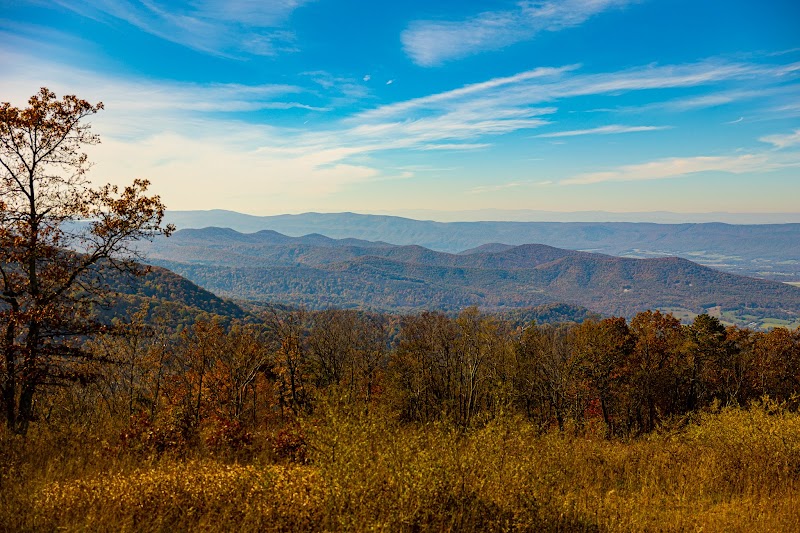
Into the Wild: Backcountry Camping in George Washington National Forest, Virginia
George Washington National Forest offers backcountry campers an exhilarating blend of rugged terrain and serene wilderness. This guide breaks down key routes, preparation tips, and what to expect for an immersive and practical adventure in Virginia’s expansive wildlands.
Prioritize Water Treatment
Natural water sources flow regularly but can harbor harmful pathogens. Always carry a reliable water filter or purification tablets to ensure safe hydration in the backcountry.
Wear Trail-Ready Footwear
Rugged trails with rocky and uneven terrain demand sturdy, well-fitting hiking boots with solid ankle support to prevent injuries.
Start Early and Pace Yourself
Begin hikes before dawn to maximize daylight hours and tackle elevation changes gradually. Frequent rest breaks help maintain energy while respecting the terrain's challenge.
Practice Leave No Trace
Camp responsibly by minimizing your impact: avoid damaging vegetation, bury waste properly, and use stoves instead of building fires to protect fragile forest soil.
Into the Wild: Backcountry Camping in George Washington National Forest, Virginia
George Washington National Forest stretches over 1.1 million acres of rugged ridges, deep hollows, and persistent streams that dare the adventurous to step beyond the beaten path. Backcountry camping here offers a raw connection to Virginia’s wild heart—where the forest breathes, whispers, and challenges with equal measure.
Embarking on your backcountry journey begins with selecting a route suited to your endurance. The Terrain varies: expect steadily climbing trails pushing through mature hardwoods and pine, punctuated by rocky scrambles and shaded creek crossings. For example, the Three Ridges Trail is a 17.4-mile loop with about 2,500 feet of elevation gain, weaving between ridges that command sweeping vistas of the Appalachians. This is an exceptional option for campers ready to meet the forest’s fierce spines and receive its breathtaking rewards.
Pack light but prepare for shifting conditions. The forest canopy may shield you from midday sun, but sudden rain showers are frequent, transforming trails into slick paths that demand solid footwear and a watchful pace. Hydration is vital: water sources appear consistently, yet filtering your own ensures safety against the forest’s unseen microorganisms.
Setting up camp requires a respectful approach—the forest guards its equilibrium. Only camp at least 200 feet from established trails and water sources to protect fragile ecosystems. Wood collection is restricted; carry a lightweight stove and fuel to sustain your meals.
As night falls, the forest's rhythm shifts. In the darkness, the wind stirs leaves with persistent insistence, and nocturnal creatures test your awareness with distant calls. Respect these wilderness sounds—they are the forest’s signature, reminding you that here, you are a visitor to something fiercely itself.
For a successful expedition, begin early in the day to conquer elevation gains with daylight, and orient your route using an up-to-date map and compass. Cell service can be scarce or unpredictable—download offline maps and inform a trusted contact of your itinerary.
Backcountry camping in George Washington National Forest is not merely a trip; it’s an engagement—a conversation between hiker and habitat. It asks not only for your effort but your respect and attentiveness. Step into this vibrant wild and find a place where each step meets a living landscape, challenging and rewarding in equal truth.
Nearby Trips
All Adventures
Boat Charters
Water Activities
Adventures near Harrisonburg, Virginia
Discover the unique and memorable adventures that make Harrisonburg, Virginia special.
Frequently Asked Questions
Do I need a permit to camp in George Washington National Forest?
No permit is required for dispersed backcountry camping, but certain developed campgrounds may require reservations. Always check with the ranger district for the latest regulations and guidelines.
Are campfires allowed in the backcountry?
Campfires are generally prohibited in sensitive areas to reduce wildfire risk and protect ecosystems. Use a stove for cooking and heating anytime you camp in dispersed zones.
How reliable is cell phone coverage in the forest?
Cell service is spotty and often unavailable in deep backcountry areas. It's critical to carry offline maps and inform a contact of your plans for safety.
What wildlife should I expect to see?
Black bears, white-tailed deer, wild turkey, and a variety of songbirds are common. Practice safe food storage to avoid attracting animals to your campsite.
Are trails well-marked for backcountry camping routes?
Main trails like the Appalachian Trail and Three Ridges Trail are marked, but many side trails and shortcut connectors require solid navigation skills due to less frequent signage.
How do I prevent water contamination from wastewater while camping?
Use biodegradable soap when washing away from water sources and dispose of wastewater at least 200 feet from streams. Always pack out any trash, including toilet paper.
Recommended Gear
Lightweight Backpacking Tent
A sturdy, weather-resistant tent protects against sudden storms and insects while keeping your campsite minimally disruptive.
Water Filter or Purification Tablets
Ensures safe drinking water from streams and springs, crucial for hydration and health in the backcountry.
Durable Hiking Boots
Provides ankle support and sole traction necessary for navigating rocky and slippery trail sections safely.
Layered Clothing System
Allows quick adjustments to changing temperatures and weather, from chilly mornings to warm afternoons or wet conditions.
Local Insights
Hidden Gems
- "Raven Cliff Overlook – A steep but rewarding vantage point offering panoramic views."
- "Jones Run Falls – A quieter cascade often missed by casual hikers."
- "Catawba Mountain Loop – Lesser-traveled trail with serene forest solitude."
Wildlife
- "Eastern box turtle"
- "Pileated woodpecker"
- "American black bear"
- "Timber rattlesnake (caution advised)"
History
"The forest features remnants of early American logging camps and Civil War-era sites, reflecting its role as a working landscape before conservation took hold."